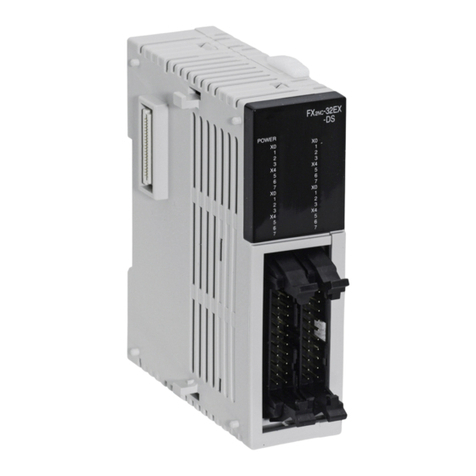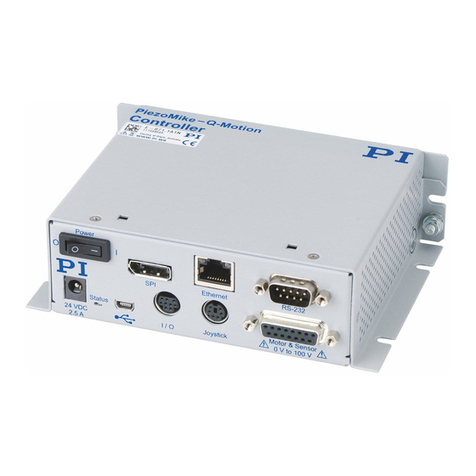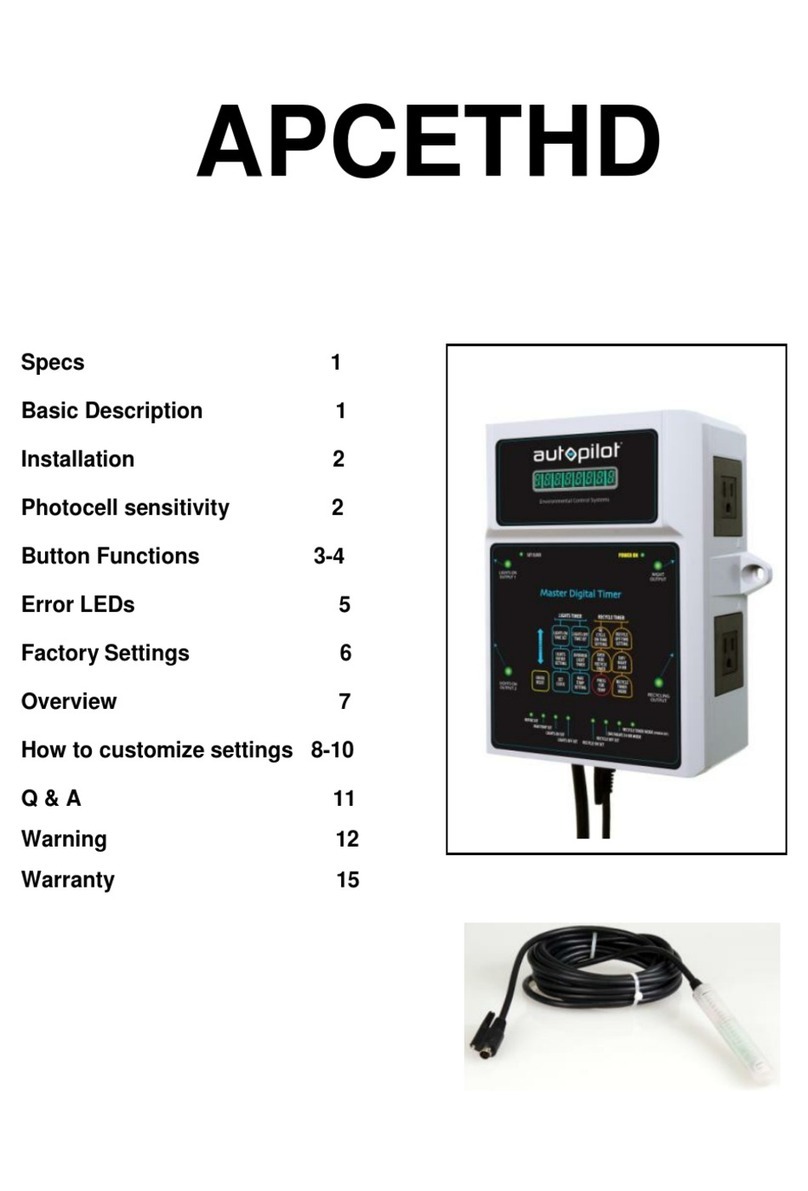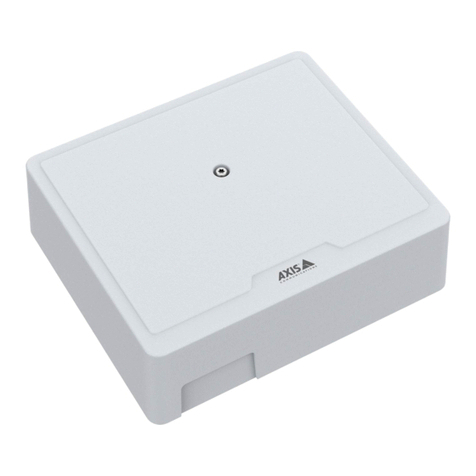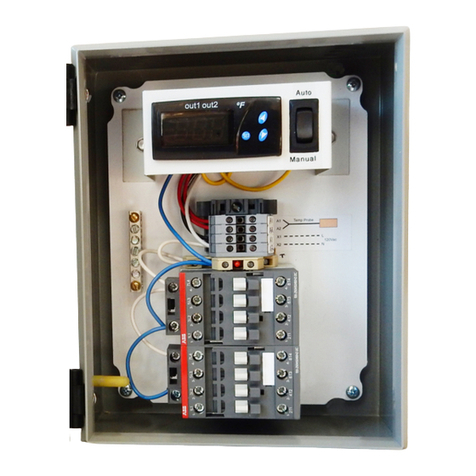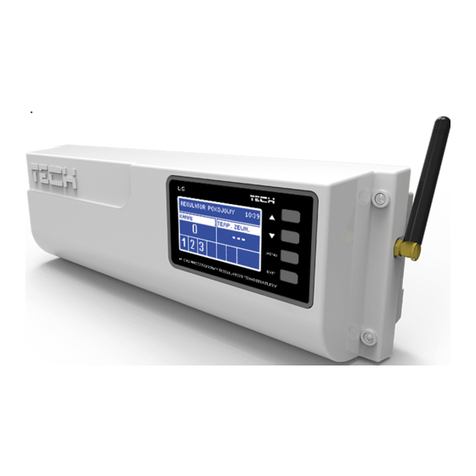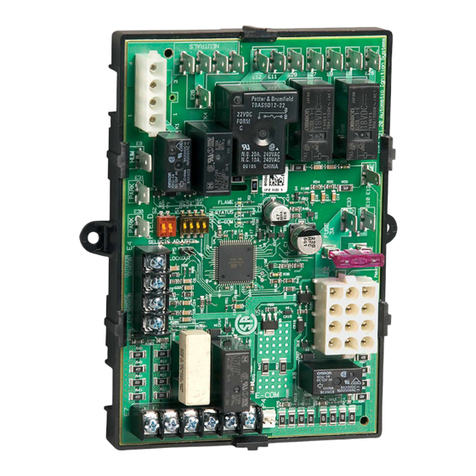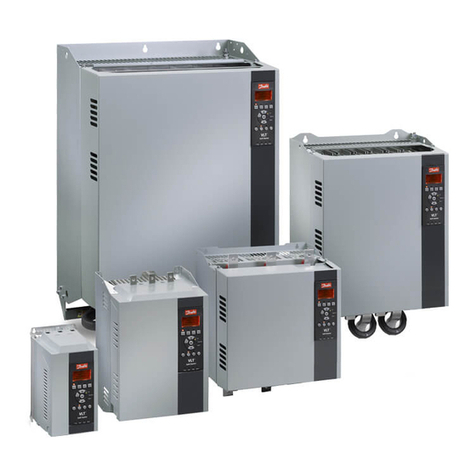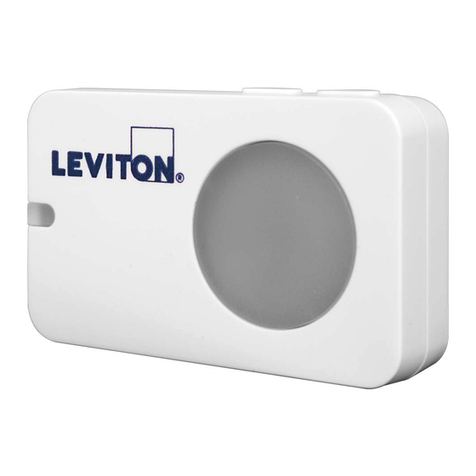Emotiva UMC-1 User manual



2
TABLE OF CONTENTS
SUBJECT
PAGE
THANK YOU
UNPACKING THE UMC-1
INVENTORY
4
4
4
1. SAFETY PRECAUTIONS
STANDBY POWER
NEC STANDARDS
INSTALLATION CONSIDERATIONS
5
6
7
8
2. FEATURES and SPECIFICATIONS
CONNECTIVITY
9
10
3. CONNECTION TYPES
VIDEO CONNECTIONS
AUDIO CONNECTIONS
CONNECTION TIPS FOR SUPERIOR SOUND
11
11
12
12
4. CONNECTION DIAGRAMS
CONNECTING TO A DVD OR BLU-RAY PLAYER
CONNECTING TO A MULTI-CHANNEL AMPLIFIER
CONNECTING TO A DIGITAL TV
CONNECTING TO AN ANALOG TV
CONNECTING TO A CD PLAYER
CONNECTING TO A SACD PLAYER
CONNECTING TO A CABLE BOX
13
13
15
16
17
18
19
20
5. UMC-1 FRONT PANEL LAYOUT 21
6. UMC-1 REAR PANEL LAYOUT 22
7. REMOTE CONTROL
CONTROLS
GETTING THE MOST OUT OF YOUR UMC-1 REMOTE
BATTERY NOTES
25
25
27
27
8. OPERATING THE UMC-1
USING THE OSD
MAIN MENU
Input
Mode
Parameter
Zone 2
Setup
UNDERSTANDING UMC-1 INPUT STRUCTURE
28
28
28
28
29
29
29
29
30
9. SPEAKER PLACEMENT/SETUP/CALIBRATION
PLACEMENT
36
36

3
BASS MANAGEMENT
SPEAKER SETUP
EMO-Q/EQ SYSTEM
AM/FM TUNER OPERATION
39
39
40
41
10. TROUBLESHOOTING GUIDE
NO POWER – UMC-1 WILL NOT TURN ON
NO SOUND
POOR AM RECEPTION
POOR FM RECEPTION
NO PICTURE
NO TONE CONTROL OR FUNCTIONS
NO ON-SCREEN DISPLAY
ZONE 2 DOES NOT PLAY DIGITAL INPUTS
EXTERNAL AMPLIFIER(S) SHUT DOWN (OFTEN OR PREMATURELY)
UMC-1 “LOCKS UP” (NO RESPONSE)
PROBLEMS UPDATING UMC-1 FIRMWARE
“HUM” NOISES
OTHER PROBABLE CAUSES OF NOISE
43
43
43
43
43
44
44
44
45
45
45
45
45
45
11. LIMITED WARRANTY 47
12. LICENSE and TRADEMARK DISCLOSURES 48

4
•THANK YOU FOR YOUR PURCHASE
We sincerely believe that the UMC-1 offers outstanding performance and value. Emotiva products are engineered and
produced with the highest quality materials and incorporate the latest technologies.
Our new generation of audio/video processors begins with the UMC-1 (Ultra Series Media Controller). Fully featured
and HDMI 1.3a compliant, the UMC-1 represents a price-to-performance advancement in audio/video processors. An
extensive and truly useful feature set, intuitive controls, and audiophile grade sound coupled with precision video
processing and signal management make the UMC-1 a breakthrough product.
The UMC-1 uses twin Cirrus® 32 bit dual core DSP’s for uncompromised high resolution HD audio decoding and signal
management. An ST-Genesis® Torino high performance-scaling engine incorporating image processing running under
proprietary Vixen software in conjunction with full Faroujda DCDi® processing provides a stunning life-like image.
The UMC-1 also uses Emotiva’s proprietary Automatic Emo-Q™ multi-channel room correction and automatic
loudspeaker setup to get the best sound out of your system and your room.
The Emotiva UMC-1, like all Emotiva products, has been designed with the user in mind. At Emotiva we believe that
technology should be simple and easy to use. This allows you to spend more time enjoying your audio and video
sources without requiring an engineering degree to operate the component. What’s more, the Emotiva UMC-1 does it
all with exceptionally refined cosmetics and a sound quality that will satisfy even the most discriminating tastes.
The Emotiva UMC-1 utilizes an array of leading edge technologies and incorporates all the features necessary to
perform the functions demanded in a high end Multi-Media Controller.
• UNPACKING THE UMC-1
The Emotiva UMC-1 should reach you in flawless condition. If you notice any shipping damage upon unpacking the unit,
please contact Emotiva immediately.
• INVENTORY
Included with your UMC-1 Ultra Series Media Controller should be a power cord, remote control, batteries, FM and AM
antenna, measurement mic, and this User’s Guide. Please take a moment to make sure all the items are there in the
packaging.
Gently lift out the unit and remove all the packaging material and accessories. The UMC-1 Ultra Series Media Controller
is a delicate instrument so please unpack it carefully to avoid unnecessary damage to the component.
It is important to save all the packing materials and the boxes in case your UMC-1 ever needs to be moved or shipped
back to the factory for service.

5
1| SAFETY PRECAUTIONS
Read this User’s Guide thoroughly before attempting to install and configure the UMC-1. All the
safety and operation instructions should be read before any operation of the component(s) begin.
After successful installation and configuration of the UMC-1, be sure to retain this manual in a safe
place for any future reference needs.
All warnings on the UMC-1 and in these operating instructions should be followed. Safety is a key
component to a long lasting and trouble free installation. The vast majority of the subsequent
safety precautions involve simple common sense. If you are not comfortable with the installation
of audio/video entertainment equipment, it will be to your benefit to seek the services of a
qualified installation professional or call us for help.
The UMC-1 should NEVER be used near water such as a bathtub, washbowl, kitchen sink, laundry tub, in a wet
basement, near a swimming pool, etc. There is a risk of electric shock to your body and permanent damage to the
equipment. Electric shock may result in permanent bodily injury or death.
The UMC-1 should be situated so that its location or installation position does not interfere with proper ventilation.
The UMC-1 should not be situated on a bed, sofa, rug or similar surface that may block any ventilation openings; or
placed in a built-in installation such as a bookcase, cabinet, or closed equipment rack that may impeded the flow of air
through ventilation openings. If installed in a closed equipment rack for custom installations, be sure to add forced air
ventilation so that it has adequate air circulation.
The UMC-1 should be situated away from heat sources such as radiators, or any other devices which produce heat.
The UMC-1 should be connected to a power supply only of the type described in this User’s Guide and what is labeled
on the UMC-component. Power supply cords should be routed so that they are not in high foot traffic areas or pinched
by item placed upon or against them, paying particular attention to cords at the wall plugs, convenience receptacles,
and the point where they connect into the UMC-1. The power cord for the UMC-1 should be unplugged from the outlet
when unused for a long period of time or turned off by the main power switch on the back of the unit.
When it’s time for cleaning the UMC-1, it should be cleaned only as recommended in this User’s Guide. Never spray
liquids directly into the component’s vent openings. Care should be taken so that small objects do not fall into the
inside of the UMC-1.
The following situations require that your UMC-1 be serviced only by qualified service personnel:
1. The power-supply cord or the plug has been damaged; or
2. Objects have fallen, or liquid has spilled into the component; or
3. The UMC-1 has been exposed to rain; or
4. The UMC-1 does not appear to operated normally or exhibits a marked change in performance; or:
5. The UMC-1 has been dropped, or its enclosure or chassis is damaged.
6. The user should never attempt to service the UMC-1 beyond the means described in this User’s Guide. All
other servicing should be referred to qualified service personnel.

6
To prevent electric shock, do not use this polarized plug with an extension cord, receptacle or
other outlet unless the blades can be fully inserted to prevent blade exposure.
Grounding or Polarization - Precautions should be taken so that the grounding or polarization
means of the component is not defeated.
This apparatus does not exceed the Class A/Class B (whichever is applicable) limits for radio noise emissions from
digital apparatus as set out in the radio interference regulations of the FCC.
For questions regarding service, please contact:
Emotiva Audio Corporation
135 Southeast Parkway Court
Franklin, TN 37064
Tel - (615) 790-6754 | (877) EMO-TECH (877-366-8324)
www.emotiva.com
WARNING - TO REDUCE RISK OF FIRE OR ELECTRIC SHOCK, DO NOT EXPOSE THIS APPLIANCE TO
RAIN OR MOISTURE.
CAUTION - TO PREVENT ELECTRIC SHOCK, MATCH WIDE BLADE OF PLUG TO WIDE SLOT, FULLY
INSERT.
• STANDBY POWER
The UMC-1 can be switched into standby mode by pressing the POWER SWITCH on the front of the unit or pressing the
OFF button on the REMOTE CONTROL. When in standby mode the power switch will glow amber. Power consumption
when in standby mode is less than 3 watts.

7
• NEC STANDARDS (NATIONAL ELECTRICAL CODE)
A Note for the Cable Television (CATV) Installer
This reminder is to call the CATV system installer’s attention to Article 820-40 of the NEC that provides guidelines for
proper grounding and in particular, specifies that the cable ground shall be connected to the grounding system of the
building as close to the point of cable entry as practical.
Antenna Grounding Outside the House
If an outside antenna is connected to the receiver, be sure the antenna system is grounded so as to provide some
protection against voltage surges and built-up static charges. Article 810 of the National Electrical Code, ANSI/NFPA 70,
provides information with regard to proper grounding of the lead-in wire to an antenna-discharge unit, connection to
grounding electrodes, and requirements for the grounding electrode. See diagram below.
Cable TV Coaxial Cable, Satellite Dish Cables and Television Antennas should be grounded BEFORE the point of entry
into the house.

8
• INSTALLATION CONSIDERATIONS
Observe the following precautions when choosing a location for your Emotiva UMC-1:
1) Protect it from prolonged exposure to direct sunlight and other direct sources of heat, such as heating vents and
radiators.
2) Do not expose the unit to rain or moisture. If fluid or a foreign object should enter the unit, immediately turn off the
power and contact Emotiva.
3) Avoid excessive exposure to extreme cold or dust.
4) Do not place heavy objects on top of the unit.
5) If you need to clean the front surface, first turn off the power and then use a soft dry cloth, rubbing with the grain.
Be careful not to scratch the display window.
Ensure the unit is plugged into an outlet capable of supplying the correct voltage and current specified for your model.
Remember to account for the electrical power that other components will require if they share a common wall socket.
The majority of household electrical sockets in places other than the kitchen and garage are 15 amperes maximum.
Most DVD players and other source components are fairly low current items. The Emotiva UMC-1 requires a minimum
of 2 amperes @ 120 volts. It should be sufficient to allow the UMC-1 to share a wall socket with other video source
units, but power amplifiers and a video display (big screen TV or video projector) should each be provided a SEPARATE
electrical connection on a SEPARATE circuit. This configuration yields the most stable power supply in any home theater
application, regardless of your equipment choices.
Refer to your power amplifier and video display’s owner’s manuals to learn the power requirements so you can safely
plan your electrical power requirements for your home entertainment system.

9
2| FEATURES and SPECIFICATIONS
Twin Cirrus® 32 bit dual core DSP’s
Decoding support for Dolby Digital, Dolby Digital EX, Dolby Digital Plus, Dolby Digital True HD, Dolby PLIIx,
DTS, DTSES, DTS HD, DTS Master Audio, DTS Neo 6, SPDIF, PCM 8 channel (note: some audio formats are only
supported via HDMI)
Multi-channel Dolby Volume (Read ‘How Dolby Volume Works’ at dolby.com)
Genesis/ST® Torino high performance scaling engine - featuring a full implementation of the Faroudja DCDi™
image processing suite
Intuitive, full color graphical OSD with adjustable transparency presented over live video, including HDMI
Emo-Q™ automatic multi-channel room correction and loudspeaker setup. Calibrated measurement
microphone included
Quadruple bass manager with independently selectable high and low pass frequencies from 40hz – 250hz, in
5 or 10Hz increments (depending on frequency)
Selectable 12db or 24db per octave high pass and low pass filters by channel groupings
Independent 11-band graphic EQ with global bass and treble controls by channel groupings
Balanced subwoofer output
All legacy video inputs can be scaled and output over HDMI at up to 1080p
1080p/24 fps video support
Video pass-through mode with 12 bit compatibility
HDMI sources can be format converted to component video up to 1080i (Only non-copyright protected
material)
HDMI 1.3a Deep Color compliant
Assignable inputs featuring input labeling, selectable decode modes, selectable triggers, etc., with
0.5dB level trims on all channels
High voltage, low impedance main analog outputs for uncompromised dynamic headroom
IR input (3.5mm mini) jack
1 - IR output (3.5mm mini) jack
1- Microphone input (3.5mm stereo mini) jack
1- USB data input (for software upgrades only)
Size: 17” W x 3 7/8” H x 13” D
Weight: 16 lbs

10
• CONNECTIVITY
5 - HDMI inputs and 1 HDMI output.
3- composite video inputs (RCA)
3 - S-video inputs (S-video mini DIN)
3 - component video inputs (RCA)
1 - component video output (RCA)
4 - stereo analog audio inputs (RCA)
1 - 7.1 analog input set (RCA)
1 - 7.1 analog output set (RCA)
4 - coaxial digital inputs, (RCA)
3 - optical digital inputs (Toslink)
1- coax digital audio output (RCA) (2.0 downmix)
1- optical digital audio output (Toslink) (2.0 downmix)
1 - Stereo or 2 channel analog multi channel mix down output for fixed level monitoring (RCA)
1- stereo analog variable and independent Zone 2 output (RCA)
1 - stereo analog fixed level record output (RCA)
High performance AM/FM tuner with 24 FM and 6 AM presets
4 - assignable trigger outputs Movie / Music / Amp-1 / Amp-2 (3.5mm mini) jack

11
3| CONNECTION TYPES
The Emotiva UMC-1 has four types of video connections on board (3 Analog and 1 Digital) and 4 types of audio
connections on board HDMI, RCA, Optical, Balanced (Subwoofer Only):
• VIDEO CONNECTIONS
Composite Video
Analog composite video signals are connected between products with a single 75-ohm coax cable with yellow RCA
connectors on each end. Composite video inputs or outputs are present on almost all types of consumer grade video
equipment.
Analog Picture Quality: Poor. This is the lowest quality discrete cable for video sources and is not recommended if a
better quality connection exists.
S-Video
Most midrange and premium video equipment provide the option of using S-video connections. The S-video (or Y/C)
cable is terminated at each end with a four-pin DIN connector. Although it may appear to be a single cable, internally it
has two 75-ohm coax or twisted pair cables to carry the separate Y (luminance) and C (chrominance) signals. This is also
an analog video signal.
Analog Picture Quality: Fair. The S-video cable is an improvement over a Composite cable but still not recommended if
a better quality connection exists.
Component Video
Component cables look just like composite cables. The difference is that, where a composite cable carries the entire
video signal on a single cable, component cables split the signal to three cables. The signal itself is referred to as either
Y, Cr, Cb or Y, Pb, Pr. Manufacturers make connecting these cables easy by color coordinating them. The tips of the
cables and jacks will be red, green and blue. A good rule of thumb is that, if the connections are RCA type, it is usually a
component cable. Most high-end DVD players and HDTV tuners will have analog component video connections.
Analog Picture Quality: Good. Gives a superior image over Composite or S-Video connections.
HDMI
HDMI (High-Definition Multimedia Interface) is an uncompressed, all-digital audio/video interface in a single cable.
HDMI supports standard, enhanced, or high-definition video, plus multi-channel digital audio on a single cable. It
transmits all ATSC HDTV standards and supports 8-channel, 192kHz uncompressed digital audio and all currently
available compressed and uncompressed formats (such as Dolby Digital, Dolby True HD, Digital Plus, PLIIx and DTS-HD
Master Audio, DTS-HD High Resolution Audio, DTS Digital Surround ES - Neo:6 - 92/24).
The HDMI section of the UMC-1 supports 480p 60Hz, 576p 50Hz, 720p 50Hz, 720p 60Hz, 1080i 50Hz, 1080i 60Hz, 1080p
50Hz, and 1080p 60Hz resolutions. The most common resolutions for the United States are 480, 720 and 1080 at 60Hz.
(50Hz resolutions are primarily used outside of the United States). The UMC-1 is fully PAL compliant.
HDMI offers the Best video resolution. Emotiva recommends using HDMI as the preferred connection.

12
• AUDIO CONNECTIONS
There are two ways to transmit audio signals to and from the UMC-1: Digital and Analog. The analog signal is an
electrical waveform representation of sound and it requires a cable for each channel. The digital signal uses a sequence
of numbers that represents the sound and requires only one cable for all channels.
You can connect your source components using an HDMI connector, RCA connector, OPTICAL connector and BALANCED
(subwoofer only).
• CONNECTION TIPS FOR SUPERIOR SOUND
Before setting up your new system, please consider the following:
Whenever possible, route the power cord away from the signal cables or speaker wires to prevent any hum or
interference heard in the speakers.
Use high quality coaxial digital cables to connect the UMC-1 to any source equipment which has coaxial digital outputs.
Optical cables transmit only light pulses and are much more immune to noises but are sensitive to excessive tight
bends. Whichever you choose, follow the cable manufacturer’s recommendations.
Many RCA type patch cords can be a very tight fit and there is usually a preferred method of getting them off. Some
have to be removed with a twisting action. Be gentle or you may damage the jacks of your UMC-1, or other
components.
Many audiophile signal cables are intended to be hooked up in one direction. If this is the case the cables will be
marked with arrows in the direction of the signal flow.
It is usual for the right channel RCA patch cords plugs to be red and the left channel connections to be white, grey or
black (depending on the cable brand). RCA connectors that are gold will be designated with a colored band to designate
the channel.
If the powered subwoofer to which you will connect the UMC-1 features a balanced XLR input, use the
UMC-1’s XLR balanced SUB output instead of an RCA type patch cord if possible. Balanced signal
transmission between the UMC-1 and the subwoofer will provide superior rejection of hum and noise,
especially if long cable runs are required.

13
4| CONNECTION DIAGRAMS
• CONNECTING TO A DVD OR BLU-RAY PLAYER
Processor
(Preferred)
(Optional)
Player
This diagram shows several methods you can use to hook up a DVD and/or BluRay player to your UMC-1. The preferred
video hookup is HDMI, although excellent video quality can be achieved with Component.
Installation considerations: HDMI 1.3a will send both audio and video through the HDMI cable. When using any other
video cables a separate cable will be needed to carry the audio to the UMC-1.
For reference the HDMI cable is marked with a Red dot. The Component video cables are marked with Yellow. The
Optical cable is marked with Blue and the Coaxial digital is marked with Green.

14
HDMI Connection - Connect a high quality HDMI cable to the HDMI OUT on the player and to one of the five HDMI
INPUTS on the UMC-1. This connection will give you the best video quality. This connection will also carry the audio
from the DVD and/or BluRay player to your UMC-1.
Component Video Connection - You can also connect a DVD and/or BluRay player using the component video out on
the player to the component video in on the UMC-1. When connecting to the UMC-1 using this method, you will have
to use a separate cable to carry the audio to the UMC-1. This can be done with RCA cables to carry an analog signal, a
Toslink cable to carry a digital optical signal or a digital coaxial cable.
NOTE: Using an optical, digital coaxial or RCA cables will not allow you to take advantage of the new Hi-Def (Un-
compressed) audio codecs that are offered on Blu-Ray discs.
Also of note: If your Blu-Ray player has 7.1 channel analog outputs you can connect it to the 7.1 channel inputs on the
UMC-1.

15
• CONNECTING TO A MULTI-CHANNEL AMPLIFIER
Processor
Amplifier
Use good quality RCA cables to connect the 7.1 channels of output from the UMC-1 to the inputs on your multi-channel
amplifier. You can use multiple amplifiers in place of a single multi-channel amplifier. They basically wire up in the
same way. If you have any questions on how to wire them, please contact Emotiva Audio Corp. for information.
There are two separate subwoofer outputs on the UMC-1. RCA (yellow) and XLR/Balanced (red). These hook directly up
to your powered subwoofer. Either can be used and are always active when there is a signal present.

16
• CONNECTING TO A DIGITAL Display or PROJECTOR
Display(rear)
(Preferred)
Processor
Connect a high quality HDMI cable to the HDMI output of the UMC-1 and then run it to the HDMI input on your digital
TV or projector.
Please note: the UMC-1 can easily drive long HDMI cables for projectors mounted remotely. For the best quality it is
highly recommended to use very high quality HDMI cables for long length runs.

17
• CONNECTING TO AN ANALOG Display
Display (rear)
Processor
Connect high quality Component Video cables to the component video out of the UMC-1 and then run them to the
component video input on your TV. Component video cables are made up of what looks like 3) RCA cables bonded
together. These are marked with three different color bands (Red, Green and Blue). Be sure to connect the proper
color cable to each output (of the UMC-1) and to the inputs of your TV (they will all be marked with the proper colors).
Please note: Very good picture quality can be achieved using Component Video cables, but if your source unit is run
into the UMC-1 via HDMI, not all broadcast or movies are allowed to converted and output over component video.

18
• CONNECTING TO A CD PLAYER - Aanalog
Processor
CD Player
Connect the right and left audio outputs of your CD player to the right and left audio inputs labeled CD on the back of
the UMC-1.
There are alternative ways to connect a CD player which are not pictured here. You can use a Toslink cable or digital
coax cable. Please see Connecting to a DVD or Blu-Ray player for reference.

19
• CONNECTING TO AN SACD PLAYER - Analog
Processor
SACD Player
Using high quality RCA cables connect the 5.1 (pictured) or 7.1 Channel outputs from your
player to the 7.1 Channel inputs on the UMC-1. Take care to to accurately connect the
proper channel to channel.
Table of contents
Popular Controllers manuals by other brands

noble pro
noble pro FLYSKY 2.4GHz AFHDS 3 user manual
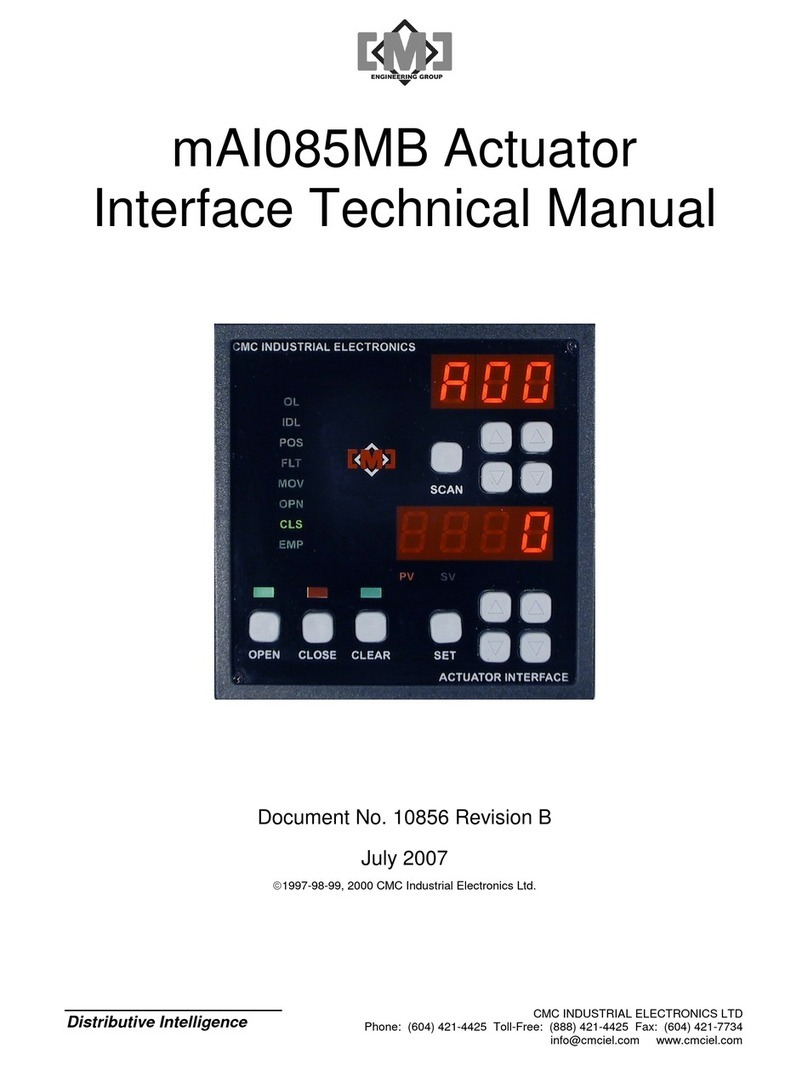
CMC Industrial Electronics
CMC Industrial Electronics mAI085MB Interface Interface technical manual
Multiplex
Multiplex MULTIcont BL-50 SD operating instructions
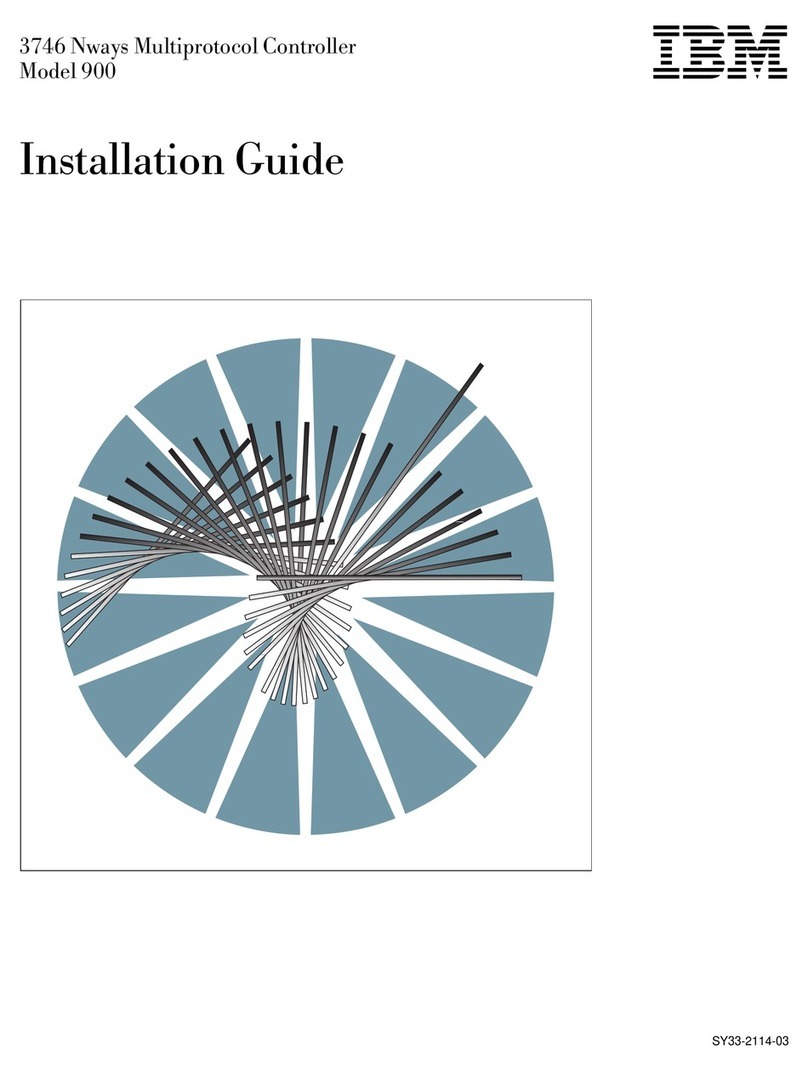
IBM
IBM 3746-900 installation guide
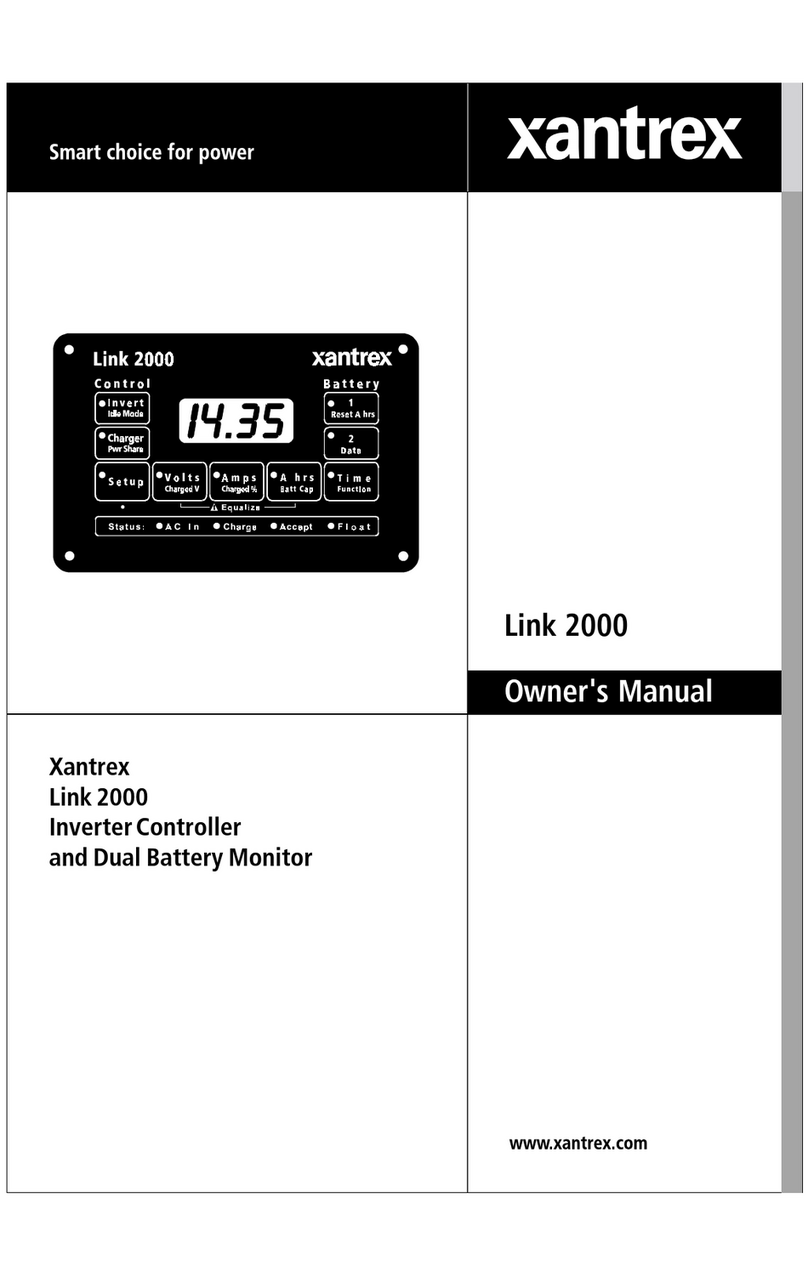
Xantrex
Xantrex Link 2000 owner's manual
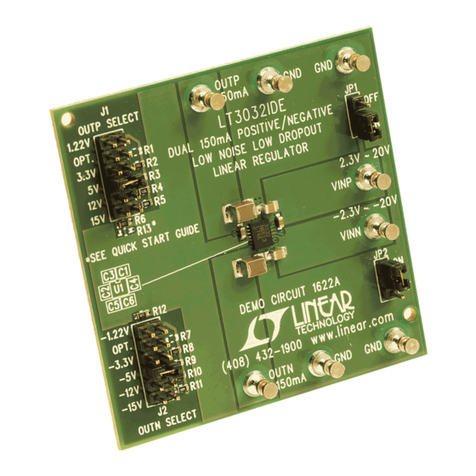
Linear Technology
Linear Technology LT3032 manual
